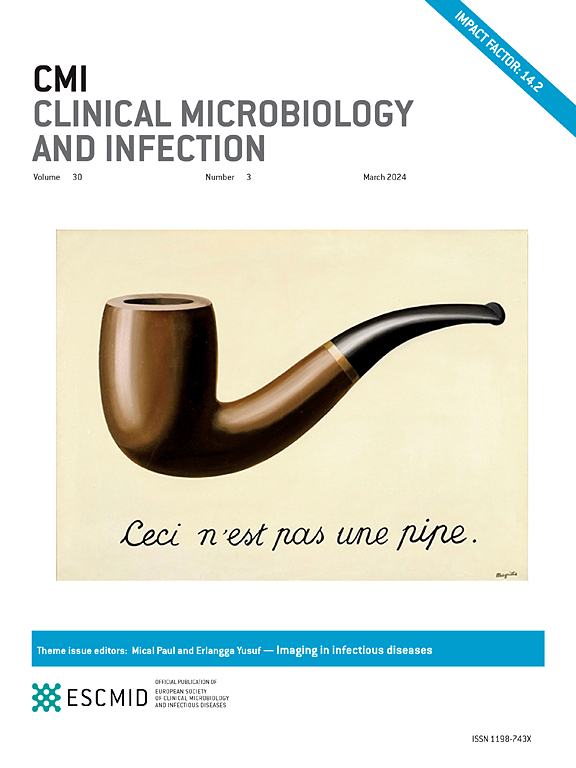Screening clinical Candida albicans isolates for invasiveness by mimicking the human environment
IF 8.5
1区 医学
Q1 INFECTIOUS DISEASES
引用次数: 0
Abstract
Objectives
Candida albicans virulence is associated with filamentation, triggered by environmental factors encountered in the host. Here, we monitored the growth behaviour of C. albicans isolated from a patient's abscess. We also established an in vitro screening framework of filamentation to assess the invasiveness potential of 10 clinical isolates.
Methods
Routine microbiology testing and convenience sampling were used for patients' selection. We monitored the colony appearance time of one abscess isolate ex vivo using time-lapse imaging. Filamentation patterns of 10 isolates were followed >14 days using 48 variations of growth conditions (glucose and nitrogen concentrations, pH, and temperature) to mimic host environment fluctuations. An automated image analysis pipeline was developed to quantify filamentation. Filamentation was also tested by growing isolates on modified filtration membranes, mimicking physical human body barriers.
Results
The abscess isolate displayed heterogeneous colony appearance times and filamentation morphologies, indicating phenotypic heterogeneity within a growing population. Filamentation of all isolates was growth parameter- and isolate-dependent. Based on their filamentation response to environmental changes, the isolates clustered into three distinct groups, reflecting their site of isolation in the host. Colony transmigration on modified filtration membranes was a predictor for filamentation on agar.
Discussion
We observed diverse filamentation morphologies in all isolates, indicating a phenotypically heterogeneous behaviour. Using our newly established screening framework, we could group isolates based on their isolation site, showing a link between filamentation morphology and invasive potential of C. albicans isolates.
通过模拟人类环境筛选临床分离的白色念珠菌的侵袭性。
目的:白色念珠菌的毒力与丝状菌有关,由宿主遇到的环境因素引发。在这里,我们监测了从患者脓肿分离的白色念珠菌的生长行为。我们还建立了一个体外筛选框架,以评估10个临床分离株的侵袭潜力。方法:采用常规微生物学检测和方便取样法进行患者选择。我们用延时成像技术监测了一例离体脓肿菌落的出现时间。通过48种不同的生长条件(葡萄糖和氮浓度、pH、温度)来模拟宿主环境的波动,研究了10株菌株在14天内的成丝模式。开发了自动图像分析流水线来量化细丝。通过在模拟人体物理屏障的改性过滤膜上培养分离菌,也测试了其成丝性。结果:分离脓肿显示异质菌落出现时间和丝状形态,表明在不断增长的种群中存在表型异质性。所有分离株的成丝均与生长参数和分离株相关。根据菌丝对环境变化的响应,分离物聚集在三个不同的群体中,反映了它们在宿主中的分离位置。菌落在改性过滤膜上的迁移是琼脂上成丝的预测因子。结论:我们在所有分离株中观察到不同的细丝形态,表明表型异质性行为。利用我们新建立的筛选框架,我们可以根据分离位点对分离株进行分组,显示白色念珠菌分离株的丝状形态与侵袭潜力之间的联系。
本文章由计算机程序翻译,如有差异,请以英文原文为准。
求助全文
约1分钟内获得全文
求助全文
来源期刊
CiteScore
25.30
自引率
2.10%
发文量
441
审稿时长
2-4 weeks
期刊介绍:
Clinical Microbiology and Infection (CMI) is a monthly journal published by the European Society of Clinical Microbiology and Infectious Diseases. It focuses on peer-reviewed papers covering basic and applied research in microbiology, infectious diseases, virology, parasitology, immunology, and epidemiology as they relate to therapy and diagnostics.

 求助内容:
求助内容: 应助结果提醒方式:
应助结果提醒方式:


